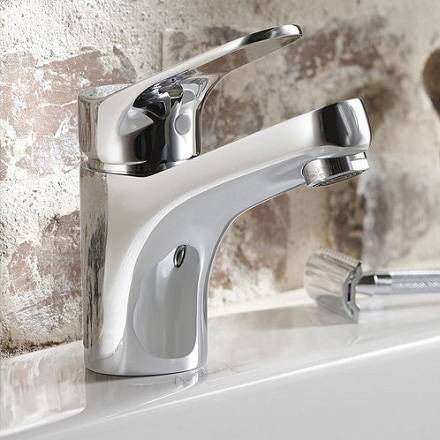
-
 Afrikaans
Afrikaans -
 Albanian
Albanian -
 Amharic
Amharic -
 Arabic
Arabic -
 Armenian
Armenian -
 Azerbaijani
Azerbaijani -
 Basque
Basque -
 Belarusian
Belarusian -
 Bengali
Bengali -
 Bosnian
Bosnian -
 Bulgarian
Bulgarian -
 Catalan
Catalan -
 Cebuano
Cebuano -
 Corsican
Corsican -
 Croatian
Croatian -
 Czech
Czech -
 Danish
Danish -
 Dutch
Dutch -
 English
English -
 Esperanto
Esperanto -
 Estonian
Estonian -
 Finnish
Finnish -
 French
French -
 Frisian
Frisian -
 Galician
Galician -
 Georgian
Georgian -
 German
German -
 Greek
Greek -
 Gujarati
Gujarati -
 Haitian Creole
Haitian Creole -
 hausa
hausa -
 hawaiian
hawaiian -
 Hebrew
Hebrew -
 Hindi
Hindi -
 Miao
Miao -
 Hungarian
Hungarian -
 Icelandic
Icelandic -
 igbo
igbo -
 Indonesian
Indonesian -
 irish
irish -
 Italian
Italian -
 Japanese
Japanese -
 Javanese
Javanese -
 Kannada
Kannada -
 kazakh
kazakh -
 Khmer
Khmer -
 Rwandese
Rwandese -
 Korean
Korean -
 Kurdish
Kurdish -
 Kyrgyz
Kyrgyz -
 Lao
Lao -
 Latin
Latin -
 Latvian
Latvian -
 Lithuanian
Lithuanian -
 Luxembourgish
Luxembourgish -
 Macedonian
Macedonian -
 Malgashi
Malgashi -
 Malay
Malay -
 Malayalam
Malayalam -
 Maltese
Maltese -
 Maori
Maori -
 Marathi
Marathi -
 Mongolian
Mongolian -
 Myanmar
Myanmar -
 Nepali
Nepali -
 Norwegian
Norwegian -
 Norwegian
Norwegian -
 Occitan
Occitan -
 Pashto
Pashto -
 Persian
Persian -
 Polish
Polish -
 Portuguese
Portuguese -
 Punjabi
Punjabi -
 Romanian
Romanian -
 Russian
Russian -
 Samoan
Samoan -
 Scottish Gaelic
Scottish Gaelic -
 Serbian
Serbian -
 Sesotho
Sesotho -
 Shona
Shona -
 Sindhi
Sindhi -
 Sinhala
Sinhala -
 Slovak
Slovak -
 Slovenian
Slovenian -
 Somali
Somali -
 Spanish
Spanish -
 Sundanese
Sundanese -
 Swahili
Swahili -
 Swedish
Swedish -
 Tagalog
Tagalog -
 Tajik
Tajik -
 Tamil
Tamil -
 Tatar
Tatar -
 Telugu
Telugu -
 Thai
Thai -
 Turkish
Turkish -
 Turkmen
Turkmen -
 Ukrainian
Ukrainian -
 Urdu
Urdu -
 Uighur
Uighur -
 Uzbek
Uzbek -
 Vietnamese
Vietnamese -
 Welsh
Welsh -
 Bantu
Bantu -
 Yiddish
Yiddish -
 Yoruba
Yoruba -
 Zulu
Zulu
replacing upper control arm
Replacing the Upper Control Arm A Comprehensive Guide
Maintaining your vehicle’s suspension system is crucial for ensuring a smooth ride and enhancing overall handling. One of the essential components of this system is the upper control arm. If you've noticed unusual noises, vibrations, or changes in steering response, it might be time to consider replacing your upper control arm. This article will walk you through the reasons for replacing this vital part, the symptoms of wear, and the replacement process.
Why Replace the Upper Control Arm?
The upper control arm plays a significant role in the suspension system, connecting the vehicle’s frame to the wheel assembly. It helps maintain proper wheel alignment and facilitates smooth vertical motion when driving over bumps or uneven surfaces. Over time, the upper control arm can wear out due to factors like road conditions, driving habits, and lack of maintenance, leading to a decline in driving performance.
Common reasons for replacing the upper control arm include
1. Wear and Tear With mileage and exposure to various road conditions, bushings and ball joints within the control arm can deteriorate. 2. Corrosion Rust can develop, especially in regions where roads are salted for winter, leading to structural weakness. 3. Accident Damage Collisions, even minor ones, can damage the control arm, necessitating a replacement for safety reasons. 4. Improved Performance Upgrading to a high-performance control arm can enhance handling, particularly for those engaged in motorsports or off-roading.
Symptoms of a Worn Upper Control Arm
Be conscious of the signs that indicate a malfunctioning upper control arm. Recognizing these symptoms early can prevent further damage to your vehicle
- Clunking Noises A common sign of wear is hearing clunking or banging noises when driving over bumps. This could indicate that the bushings or ball joints are worn out. - Uneven Tire Wear If you notice that your tires are wearing unevenly, it might be due to improper wheel alignment caused by a faulty control arm. - Vibration or Instability Excessive vibration or a feeling of instability while driving can signal that the control arm isn’t functioning correctly. - Steering Issues If you experience sudden changes in steering response or difficulty maintaining a straight path, a worn control arm could be the culprit.
replacing upper control arm

The Replacement Process
If you’ve determined that your upper control arm needs replacing, you can either take your vehicle to a professional mechanic or tackle the job yourself if you have the necessary skills and tools. Here’s a simplified overview of the steps involved in the replacement process
1. Gather Necessary Tools and Parts Obtain a new upper control arm, socket and wrench sets, a ball joint separator, and safety equipment. 2. Lift the Vehicle Use a jack to elevate the vehicle, then secure it with jack stands. Ensure you are working in a flat area.
3. Remove the Wheel Take off the wheel to gain access to the suspension components.
4. Detach the Old Control Arm Disconnect the control arm from the chassis and the steering knuckle using the appropriate tools. Be cautious of the suspension components around it.
5. Install the New Control Arm Position the new upper control arm and secure it to the chassis and steering knuckle. Make sure all bolts are torqued to the manufacturer's specifications.
6. Reassemble and Test Drive Reattach the wheel, lower the vehicle, and perform a test drive to ensure everything is functioning smoothly.
Conclusion
Replacing the upper control arm is essential for safe and efficient vehicle operation. If you notice any symptoms of wear or damage, addressing them promptly can prevent further complications and enhance your driving experience. Whether you choose to perform the replacement yourself or seek professional help, being informed about the process will empower you to maintain your vehicle’s performance and safety.







